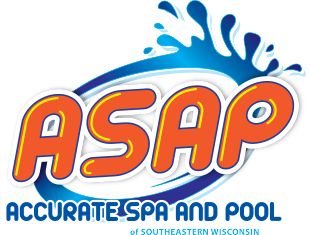Warming up your backyard pool in Glendale can make early spring dips and late autumn swims way more comfortable. But with Arizona’s unique climate—and the rising costs of energy—finding the right way to heat your pool takes a bit of thought. Whether you’re trying to stretch swim season for the kids or just want to keep your evening laps pleasant, this guide will walk you through the real-world steps to heat your pool efficiently and effectively.
Assessing Your Pool’s Current Temperature Needs
Before you start shopping for heaters, it’s smart to get a clear idea of what you’re working with. Pool temperatures in Glendale can swing quite a bit depending on the season, shade, and how much sun your pool gets during the day. Take a week to monitor your water’s temperature at different times—morning, afternoon, and evening. This gives you a baseline and helps you figure out how many degrees you actually need to raise the water, not just how it feels during a rare cold snap.
Also, think about who’s using the pool and when. If it’s mostly for kids during summer, you might only need a slight bump in spring and fall. If you’re eyeing early morning swims in April or evening soaks in October, you’ll need a more robust solution. Knowing your temperature goals (say, aiming for 82°F instead of 78°F) helps you right-size any heating investment.
Choosing the Most Effective Pool Heating Methods
In Glendale, you’ve got three main options: gas heaters, electric heat pumps, and solar heaters. Gas heaters (propane or natural gas) are fast and reliable, great for quickly warming the pool for a weekend party, but they’re usually the priciest to run long-term. Electric heat pumps work like reverse air conditioners, pulling heat from the air—a solid choice in Arizona’s mild climate, as long as nighttime temps don’t drop too low.
Solar heaters are a popular pick in sunny areas like Glendale. They use your existing pump to circulate water through panels on the roof or a rack, heating the pool with free sunshine. The upfront cost can be higher, but ongoing expenses are minimal. If your backyard gets good sun, solar might be the most “set-it-and-forget-it” option. Some folks even combine solar with a backup gas or electric heater for flexibility.
Calculating Heating Costs and Local Energy Options
It’s one thing to install a big, shiny heater—it’s another to keep it running. Gas heaters can chew through fuel, especially if you’re trying to keep a big pool warm all week. Expect to pay more per month compared to heat pumps or solar, especially as fuel prices fluctuate. Heat pumps cost more up front, but they’re efficient in Glendale’s climate and have lower monthly bills, especially if you already pay a reasonable electric rate.
Solar heating’s main “cost” is the installation and maybe the cost of a booster pump if your existing system isn’t strong enough. After that, the sun does most of the work free of charge. For all systems, a good pool cover makes a difference—slap one on at night and you’ll cut heat loss dramatically, no matter what heating method you use. Remember, Glendale’s utilities offer different rates at different times of day; running your heat pump during off-peak hours can shave some dollars off your bill.
Installing and Maintaining Your Chosen Heating System
No matter which heater you decide on, professional installation is key—especially with gas lines or electrical work. A botched install can lead to leaks, hazardous conditions, or just a system that doesn’t work right. If you go solar, make sure your panels are placed for maximum sun and that your pump is up for the task; roofs are common, but ground mounts work if you’ve got the space.
Once installed, regular maintenance extends the life of your system. Gas heaters need annual inspections for burners and lines, and a flush to keep things running smooth. Heat pumps should have their coils cleaned and airflow checked. Solar setups mostly need you to keep the panels clean (a garden hose usually does the trick) and make sure there aren’t leaks. Fix small issues early and you’ll avoid expensive repairs later.
Warming your Glendale pool is all about balancing comfort, cost, and convenience. By honestly assessing your needs, choosing the right system, and keeping up with maintenance, you’ll get more use from your backyard oasis—and maybe even convince yourself to swim a little earlier, or a little later, each year. Don’t be afraid to ask your local pool pros for advice based on your own setup. A little planning now means more good times in the water down the road.
